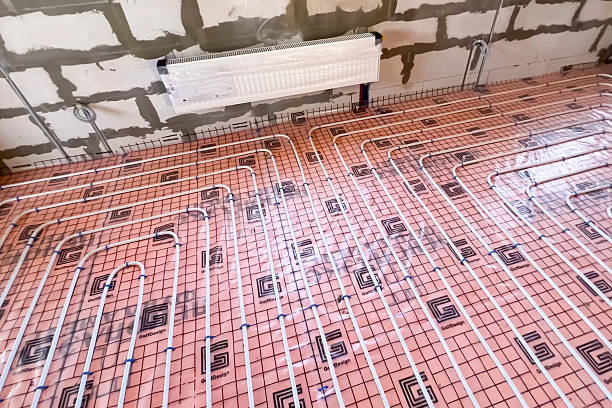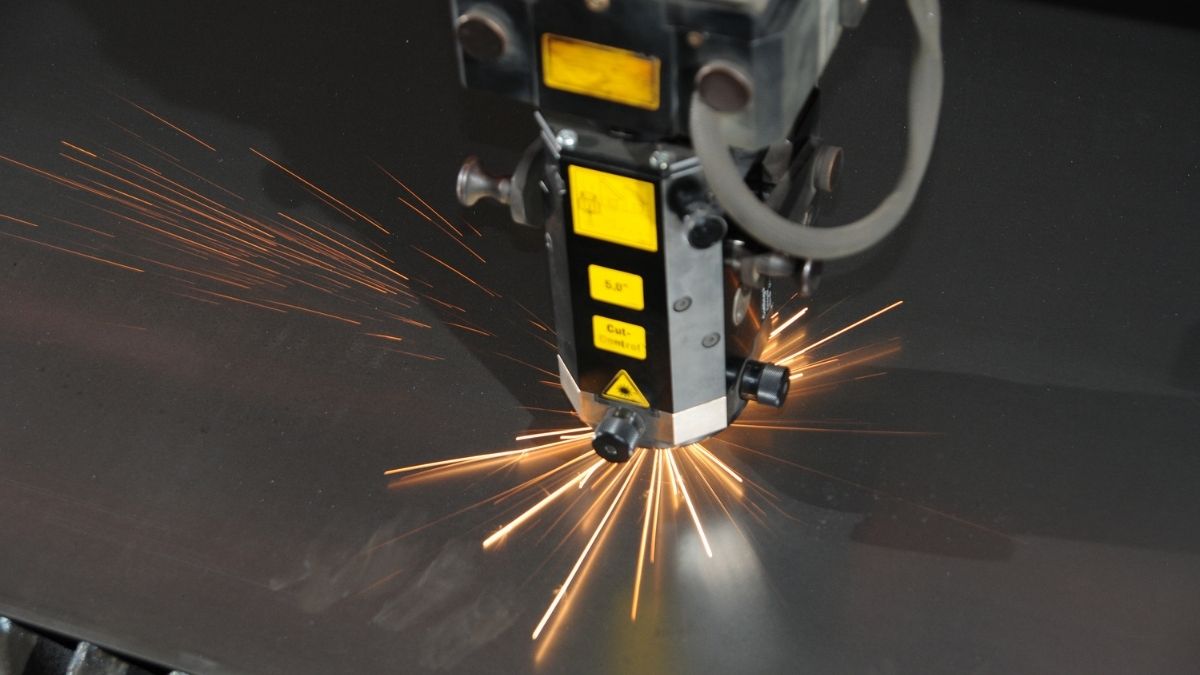Looking to make your floors warm and comfortable year-round? Floor heating cables offer an efficient, low-profile way to heat any room from the ground up. Whether you’re remodeling a bathroom or planning a cozy basement upgrade, these electric systems are worth considering. In this guide, we’ll break down what you need to know—without the jargon or sales pitch—so you can choose the right cable system for your space and feel confident doing it.
What Is Electric Floor Heating?
Electric floor heating is a system that uses thin cables installed beneath the floor to produce radiant heat. Instead of heating the air like traditional systems, it warms the surface and radiates heat upward, creating a consistent and pleasant indoor climate. It’s especially popular in colder climates and works well in areas with tile, stone, or other hard-surface flooring.
Key Parts of a Floor Heating System
A typical electric floor heating setup includes:
- Heating Cables: These do the heavy lifting—running under your floor and producing heat.
- Thermostats and Sensors: They let you control the temperature and keep it steady.
- Insulation or Membranes: Help push the heat upward where you want it, rather than letting it escape downward.
Each piece plays an important role in making the system run smoothly and efficiently.
Types of Floor Heating Cables
There are two main formats:
- Loose Cables: These are flexible and can be laid out to fit around corners, fixtures, or oddly shaped rooms. You space them manually during installation.
- Heating Mats: These come with pre-spaced cables already attached to mesh sheets. They’re faster to install, especially in square or rectangular spaces.
The main difference comes down to layout flexibility and installation time.
Constant Wattage vs. Self-Regulating Cables
Here’s a quick comparison:
- Constant Wattage cables provide steady heat output no matter the temperature. They’re predictable and reliable, but they need careful spacing during installation to avoid overheating.
- Self-Regulating cables adjust their heat output depending on the surrounding temperature. They’re energy-efficient and safer in changing conditions.
If you want a “set it and forget it” solution, self-regulating might be the better choice. But for consistent, budget-friendly heating, constant wattage cables are tough to beat.
How Heating Cables Are Built
At the heart of these systems is the cable itself. It’s usually made with a metal core (like copper or a special alloy), surrounded by insulation and protective layers. These layers shield the cable from moisture, damage, and electrical faults—important in both dry and wet areas.
Which Floors Work Best with Radiant Heating?
Floor Heating Cables can be used under several types of flooring, including:
- Tile and Stone: These materials conduct heat very well and are often used in bathrooms and kitchens.
- Vinyl and Laminate: Also compatible, but installation must be done carefully to prevent overheating.
- Engineered Wood: Works in some cases, but always check manufacturer guidelines.
The subfloor also matters—concrete, plywood, and cement board are all suitable as long as they’re prepped correctly.
How Installation Works
There are a few ways to install floor heating cables:
- With an Uncoupling Membrane: Helps protect the tile from movement cracks while holding the cable in place.
- Embedded in Leveling Compound: Ideal when installing under vinyl or laminate for a smooth surface.
- In Thinset Mortar: Common for tile installations, where cables go right beneath the surface.
Each method has its pros depending on your flooring type and desired finish height.
Is It DIY-Friendly?
Some systems are easier than others. Pre-spaced mats are more straightforward and manageable for beginners. Loose cables require a bit more planning and patience. That said, any installation that involves electricity should be checked or handled by a licensed professional.
Heat Output and Energy Use
Most Floor Heating Cables produce between 10 and 15 watts per square foot. The system’s efficiency depends on how well the room is insulated and what kind of floor it’s under. Using a programmable thermostat helps regulate heat output and avoid energy waste.
Smart Thermostat Options
Many systems now include or are compatible with:
- Basic Programmable Thermostats: Let you set a daily or weekly heating schedule.
- Wi-Fi Enabled Thermostats: Allow you to control the heat from your phone or even use voice commands.
A built-in sensor under the floor helps keep temperatures consistent and prevents overheating.
Safety and Certifications
Safety is a big focus with electric floor heating. Quality cables are usually tested and certified by independent labs and include features like:
- Built-in ground fault protection
- Waterproof insulation
- Thermostat limiters
These safeguards are especially important in wet rooms like bathrooms and kitchens.
Can You Use Them in Wet Areas?
Yes. With the right waterproofing system and proper installation, Floor Heating Cables are perfectly safe under tile in bathrooms, showers, or laundry areas. Just make sure everything is sealed and connected according to safety standards.
Durability and Expected Lifespan
Electric heating cables are built to last. When properly installed and not damaged during construction, they can operate reliably for 20 years or more. Some systems come with long-term warranties that cover manufacturing issues and offer peace of mind.
Where Do Heated Floors Work Best?
Radiant heating isn’t just for bathrooms. It works great in:
- Basements: Helps combat the chill from concrete floors.
- Kitchens: Keeps tile or stone comfortable underfoot.
- Bedrooms and Living Rooms: For a more luxurious full-home setup.
Some people use it as a primary heat source in small, well-insulated spaces; others use it to supplement existing systems.
Environmental Benefits
Electric radiant heating is clean and quiet. It doesn’t move air around (great for allergy sufferers) and works well with energy from solar panels or other renewable sources. Proper insulation below the cables can also reduce the energy needed to keep floors warm.
Common Issues and Fixes
Occasionally, issues like cold spots or unresponsive thermostats pop up. These can usually be traced back to:
- Cable damage during installation
- Loose connections
- Faulty sensors
Using a multimeter to check resistance before and after installation helps catch problems early.
Installation Mistakes to Avoid
A few key things to watch out for:
- Don’t let the cables touch or cross—they can overheat.
- Don’t cut the cables to fit a space.
- Make sure your floor is clean, dry, and flat before installing anything.
Taking your time and following manufacturer guidelines makes all the difference.
Comparison of Cable Formats
| Feature | Loose Cables | Heating Mats |
|---|---|---|
| Flexibility | High | Moderate |
| Install Time | Longer | Faster |
| Room Shape | Irregular | Standard |
| DIY Level | Intermediate | Beginner |
Before You Choose a System
Ask yourself:
- What kind of floor am I installing over?
- Is this a main heat source or a supplement?
- Do I want to install it myself?
- Am I covering an odd-shaped space?
These answers will help steer you toward the right type of Floor Heating Cables.
Main Key Takeaways
- Floor Heating Cables offer consistent, silent, and energy-efficient warmth right under your feet.
- Choose the right format—loose cables or mats—based on your room shape and DIY skills.
- Installation matters. Plan ahead, follow safety protocols, and consider hiring an electrician for the final connections.
- With the right setup, radiant floor heating can last for decades and improve your home’s comfort all year long.
Frequently Asked Questions
Can I use floor heating as my only heat source?
Yes, in smaller or well-insulated spaces, radiant floor heating can replace traditional systems.
Do I need insulation under the cables?
Insulation helps direct the heat upward and reduces energy loss, making the system more efficient.
Will it damage vinyl or laminate flooring?
Not if installed correctly. Always check that your flooring is rated for radiant heat and follow the manufacturer’s guidelines.









